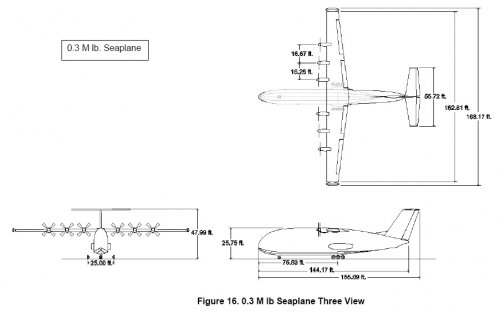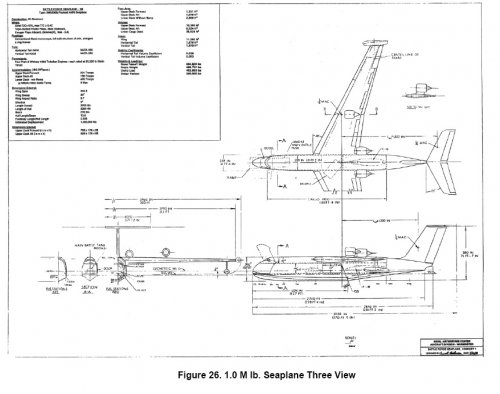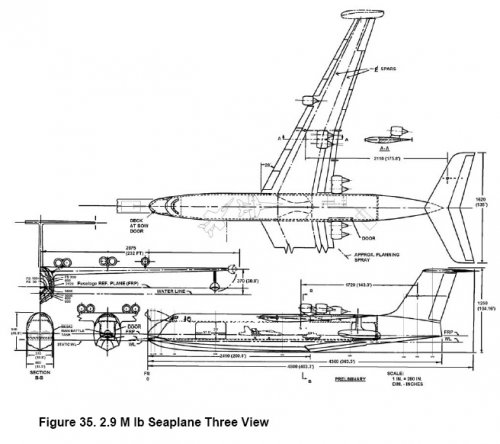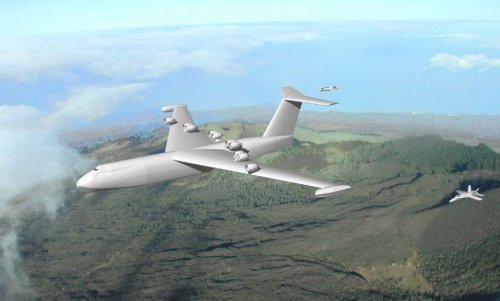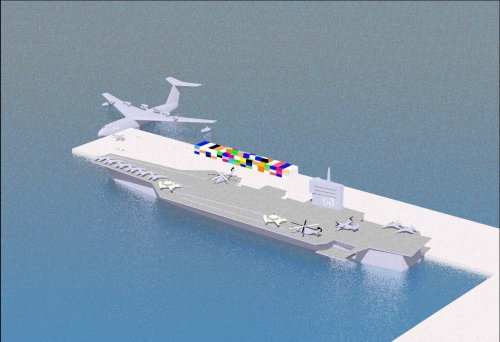- Joined
- 25 June 2009
- Messages
- 14,758
- Reaction score
- 6,165
The Naval Surface Warfare Center, Carderock Division (NSWCCD) has tasked the NAVAIR Advanced Airborne Systems Design (AASD), Patuxent River MD, formerly the Aircraft Conceptual Design Branch, Warminster PA, to study the potential applications for future seaplane designs to fulfill the cargo transport role within the emerging Sea Base Concept of Operations. To assess the future viability of seaplanes, NSWCCD required a study that will forecast the potential effect of maturing technology upon future seaplanes.
The seaplane designs to be used as a base of study were designed by the Aircraft Conceptual Design Branch in 1994 and at the Advanced Airborne Systems Design, in 2004. The designs were as follows:
1. Battleforce Seaplane (BFS)-1.0 M lb. seaplane designed in 1994 with a gross take-off weight of 1,000,000 lbs.
2. Battleforce Seaplane (BFS)-2.9 M lb. seaplane designed in 1994 with a gross take-off weight of 2,923,000 lbs.
3. Battleforce Seaplane (BFS)-0.3 M lb. seaplane designed in 2004 with a gross take-off weight of 260,000 lbs.
The BFS-1.0 M lb. and the BFS-2.9 M lb. were designed for the Office of Naval Research and the 0.3 M lb. seaplane was designed for the Naval Surface Warfare Center, Carderock, MD.
The 2.9 M lb. seaplane and 1.0 M lb. seaplanes were envisioned in 1993 when Congress had mandated the Defense Advanced Research Projects Agency (DARPA) to investigate ”very large ground effect aircraft”. This was in reaction to the Russian “Wingship” project. The Wingship was a flying boat designed to carry troops across oceans at a speed of 400 mph. The Wingship concept was actually a flying winged ship to attempt to replace the slow ships that travel about 30 mph. The Wingship was to fly in ground effect, i.e. about 50 ft. above the ocean surface, and obtain efficiencies from the interaction of the cushion of air between the wing and sea surface. During a flight test, the prototype crashed and was sunk in the Caspian Sea, killing the pilots. A wing-in-ground effect aircraft proved to be impractical, although the idea of being able to transport a large group of soldiers and equipment from one destination to another quickly is still an important issue. This situation prompted the Conceptual Design Branch to propose and design a seaplane to fill this capability and still be able to fly at a high altitude over mountainous terrain. The Naval Aviation Warfare Center – Aircraft Division (NAWCAD) internally funded a counterpoint study to compare improved and
advanced state of the art seaplane designs with the “revolutionary” Wingship. The two seaplane designs, the BFS 2.9 M lb. and the BFS 1.0 M lb., were created.
The design philosophy applied to these aircraft were as follows:
1. Apply all the applicable current, low risk technology to the designs
2. For low risk assumption, use design concept technology that already were successfully in use. Examples include the Russian Albatross (circa 1990’s) seaplane for rescue and the Navy Martin P6-M Seamaster bomber type seaplane.
The BFS seaplane proportions were very similar to these aircraft, except expanded to carry more payload.
Source: THE POTENTIAL EFFECT OF MATURING TECHNOLOGY UPON FUTURE SEAPLANES
by Mr. August Bellanca & Ms. Carey Matthews, April 2005

